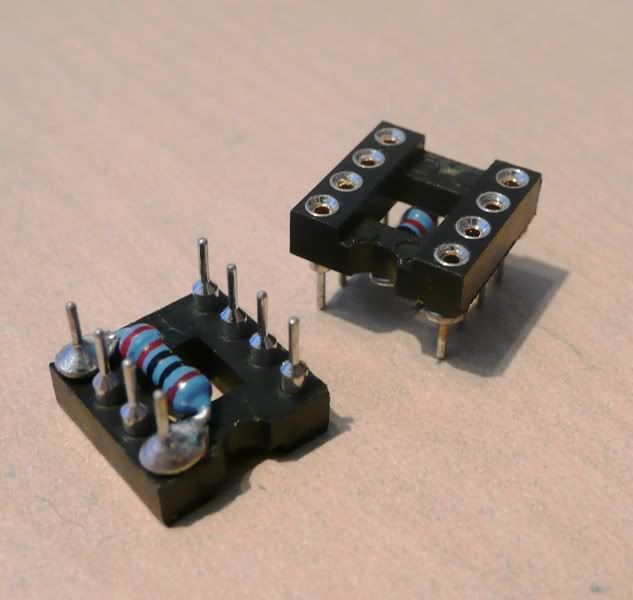murrays
100+ Head-Fier
- Joined
- Jan 10, 2009
- Posts
- 302
- Likes
- 42
Quote:
You say you are getting background hiss and the modules are running warm/hot - these are 2 symptoms of HF oscillation. Sometimes the audio will sound OK as 'phones and ears can only process the lower audio frequencies. However, the amps could be oscillating in the MHz range, effectively creating an AM radio broadcast. This can use up a lot of power (hence the heat) and can go as far as destroying components.
At the higher frequencies (MHz) those long leads provide all sorts of unwanted couplings between inputs, outputs, feedback loop, power, etc that can provoke oscillation.
One thing that may be saving your bacon, and someone else who knows better may be able to step in here to confirm/deny
 , your modules may be tailored to only work at audio frequencies and may be deliberately rolled off below the HF range. Certainly most chip op amps will have a usable bandwith up to at least 1 Mhz or beyond. I have personally seen such chips oscillating continuously while still providing audio output. Presumably an AM transistor radio would pick up signals in the MW band?
, your modules may be tailored to only work at audio frequencies and may be deliberately rolled off below the HF range. Certainly most chip op amps will have a usable bandwith up to at least 1 Mhz or beyond. I have personally seen such chips oscillating continuously while still providing audio output. Presumably an AM transistor radio would pick up signals in the MW band?
Quote:
Yes, bypassing requires very short leads to eliminate inductance and self-resonances in the HF ranges. It is good that there are caps on the modules, as well as the ones on the main board. A short, direct earth return is a requirement in many cases, though. These modules may be different enough from chip op amps that what you are doing is OK, whereas it wouldn't be with a standard chip op amp on the end of such long extensions. I will admit to having no experience with those discrete modules - others may be able to fill in the details here...
| Originally Posted by crapback /img/forum/go_quote.gif I was a bit worried about EMI/RFI issues with the long leads but I can turn the volume all the way up with winamp/medimonkey/foobar paused and there is just a slightly audible bit of hiss that is even in both channels. |
You say you are getting background hiss and the modules are running warm/hot - these are 2 symptoms of HF oscillation. Sometimes the audio will sound OK as 'phones and ears can only process the lower audio frequencies. However, the amps could be oscillating in the MHz range, effectively creating an AM radio broadcast. This can use up a lot of power (hence the heat) and can go as far as destroying components.
At the higher frequencies (MHz) those long leads provide all sorts of unwanted couplings between inputs, outputs, feedback loop, power, etc that can provoke oscillation.
One thing that may be saving your bacon, and someone else who knows better may be able to step in here to confirm/deny

Quote:
| Originally Posted by crapback /img/forum/go_quote.gif I thought there might be a bit of hum from the transformer's magnetic field but there was no hum at all. I would love to be able to come up with a better arrangement than the use of the long extension leads but I drive a truck for a living and for me to be able to bring my zero with me I need to be able to keep it closed up. If I could leave the top of all the time i'd probably just stack a couple dip sockets till the hdams could clear the caps on the HA. I'm a bit of a noob in electronics so i'm not quite sure what you are talking about bypassing. All I know is there are a pair of bypass caps on each module and I have bypass caps on all the electrolytic caps of the frankenzero mod plus a few. Are you saying that the length of the leads is decreasing the effectiveness of the bypass caps on the modules? This is all a fun learning experience for me so all advice is appreciated. 
|
Yes, bypassing requires very short leads to eliminate inductance and self-resonances in the HF ranges. It is good that there are caps on the modules, as well as the ones on the main board. A short, direct earth return is a requirement in many cases, though. These modules may be different enough from chip op amps that what you are doing is OK, whereas it wouldn't be with a standard chip op amp on the end of such long extensions. I will admit to having no experience with those discrete modules - others may be able to fill in the details here...


























